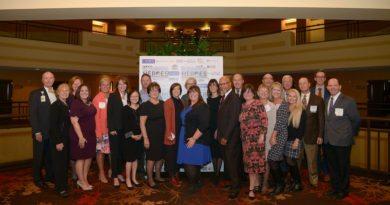At a Loss New Report Details Impact, Cost of Alzheimer’s Disease
According to the “2013 Alzheimer’s Disease Facts and Figures” report released earlier this year by the Alzhemer’s Assoc., one in three seniors dies with Alzheimer’s or another dementia in the U.S. The report shows that, while deaths from other major diseases, such as heart disease, HIV/AIDS, and stroke, continue to experience significant declines, Alzheimer’s deaths continue to rise, increasing 68{06cf2b9696b159f874511d23dbc893eb1ac83014175ed30550cfff22781411e5} from 2000 to 2010.
“Unfortunately, today there are no Alzheimer’s survivors. If you have Alzheimer’s disease, you either die from it or die with it,” said Harry Johns, president and CEO of the Alzheimer’s Assoc. “Now we know that 1 in 3 seniors dies with Alzheimer’s disease or another dementia. Urgent, meaningful action is necessary, particularly as more and more people age into greater risk for developing a disease that today has no cure and no way to slow or stop its progression.”
Alzheimer’s disease is the sixth-leading cause of death in the U.S. and is the only leading cause of death without a way to prevent, cure, or even slow its progression. Based on 2010 data, Alzheimer’s was reported as the underlying cause of death for 83,494 individuals. “2013 Alzheimer’s Disease Facts and Figures” reveals that an estimated 450,000 people in the U.S. will die with Alzheimer’s in 2013. The true number of deaths caused by Alzheimer’s is likely to be somewhere between the officially reported number of those dying from and those dying with Alzheimer’s.
According to the report, a recent study evaluated the contribution of individual common diseases to death using a nationally representative sample of older adults, and found that dementia was the second-largest contributor to death behind heart failure. Among 70-year-olds with Alzheimer’s disease, 61{06cf2b9696b159f874511d23dbc893eb1ac83014175ed30550cfff22781411e5} are expected to die within a decade. Among 70-year-olds without Alzheimer’s, only 30{06cf2b9696b159f874511d23dbc893eb1ac83014175ed30550cfff22781411e5} will die within a decade.
Human and Financial Toll
More than 5 million Americans are living with Alzheimer’s disease. Without the development of medical breakthroughs that prevent, slow, or stop the disease, by 2050, the number of people with Alzheimer’s disease could reach 13.8 million.
Alzheimer’s and dementia place an enormous burden on individuals and families. In 2012, there were more than 15 million caregivers who provided more than 17 billion hours of unpaid care valued at $216 billion. Individuals with dementia often require increasing levels of supervision and personal care as the disease progresses. As symptoms exacerbate with the progression of the disease, the care required of family members and friends can often result in increased emotional stress and health challenges for caregivers. Due to the physical and emotional toll of caregiving, Alzheimer’s and dementia caregivers had $9.1 billion in additional healthcare costs of their own in 2012.
The burden on the nation’s healthcare system and government programs is also enormous. According to “2013 Alzheimer’s Disease Facts and Figures,” the total payments for health and long-term care services for people with Alzheimer’s and other dementias will total $203 billion in 2013, mostly borne by Medicare and Medicaid, with combined costs of $142 billion. Despite these staggering figures today, by 2050 total costs are expected to increase 500{06cf2b9696b159f874511d23dbc893eb1ac83014175ed30550cfff22781411e5} to $1.2 trillion.
“Alzheimer’s disease steals everything — steadily, relentlessly, inevitably. With Baby Boomers reaching the age of elevated risk, we do not have time to do what we have always done,” said Robert Egge, vice president of public policy for the Alzheimer’s Assoc. “The National Institutes of Health needs to reset its priorities and focus its resources on the crisis at our doorstep, and Congress must fully fund implementation of the National Alzheimer’s Plan to solve the crisis.”
Long-distance Caregiving
“2013 Alzheimer’s Disease Facts and Figures” also explores the challenges faced by long-distance caregivers for people living with Alzheimer’s. The report finds that nearly 15{06cf2b9696b159f874511d23dbc893eb1ac83014175ed30550cfff22781411e5} of caregivers for people with Alzheimer’s or another dementia live at least one hour away from their loved one. These long-distance caregivers had annual out-of-pocket expenses nearly twice as high as local caregivers — $9,654 compared to $5,055.
“The difficulties of Alzheimer’s and dementia are significant for all caregivers, but individuals who live a substantial distance from their loved ones face unique hardships,” said Beth Kallmyer, vice president of constituent services for the Alzheimer’s Assoc. “Long-distance caregivers have nearly double the out-of-pocket expenses of local caregivers, experience greater challenges assessing the care recipient’s conditions and needs, report more difficulty communicating with healthcare providers, and often have higher levels of psychological distress and family discord in their caregiving experience.” v
This article was prepared by the Alzheimer’s Assoc.



Comments are closed.